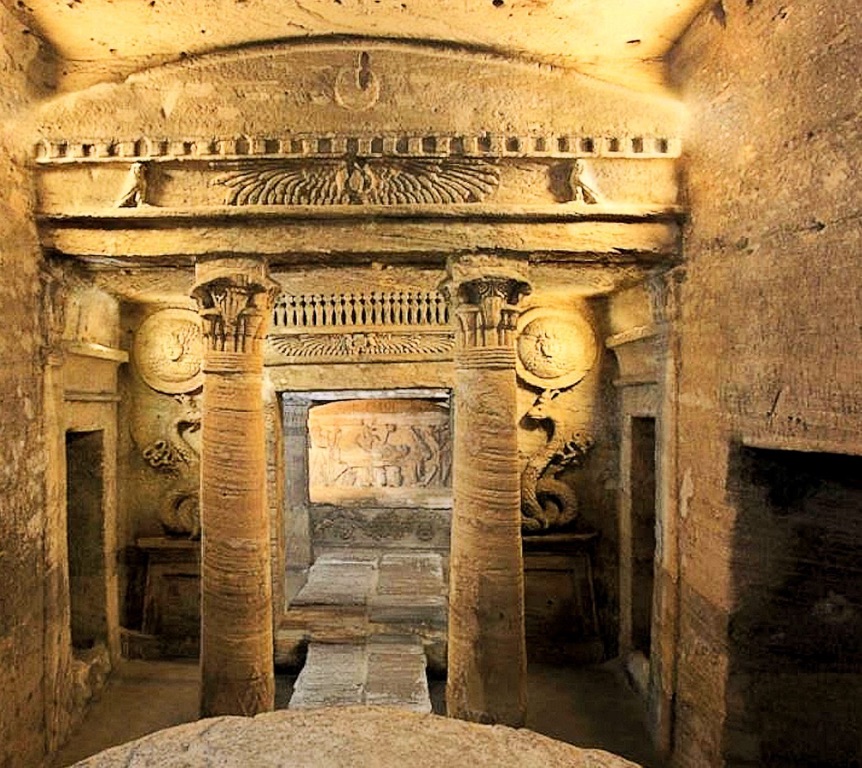The Catacombs of Kom el Shoqafa, located in Alexandria, Egypt, is a historical archaeological site considered one of the Seven Wonders of the Middle Ages. The necropolis consists of a series of Alexandrian tombs, statues, and archaeological objects of the Pharaonic funeral cult with Hellenistic and early Imperial Roman influences. The catacombs were likely used as a burial site from the 2nd century to the 4th century AD. The name ‘Kom el Shoqafa’ translates to ‘Mound of Shards’, referring to the heaps of pottery and terra cotta that were left by visitors who would eat food during their visit, then break their plates, as it was considered unlucky to take them back home.
Get your dose of History via Email
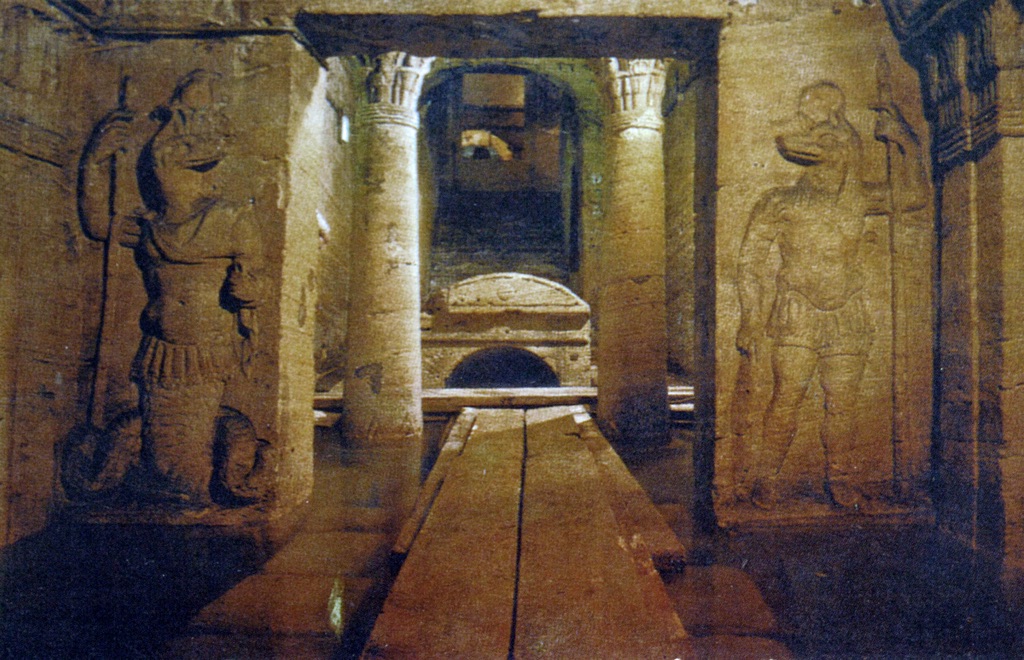
What is the historical significance of the Catacombs of Kom el Shoqafa and what civilizations have used them?
The Catacombs of Kom el Shoqafa hold immense historical significance as they represent the largest known Roman burial site in Egypt and one of the last major construction projects in the classical Egyptian style. They are a prime example of the process of syncretism, where Greek, Roman, and Egyptian cultures merged and created a unique style of art and architecture.
The catacombs were used by various civilizations, primarily the Romans. However, the site’s architecture and artwork suggest that it was also used by the Greeks and Egyptians. The catacombs were rediscovered in 1900 when a donkey accidentally fell into the access shaft. Since then, they have become a significant archaeological site, providing insights into the burial practices and beliefs of the ancient civilizations that used them.
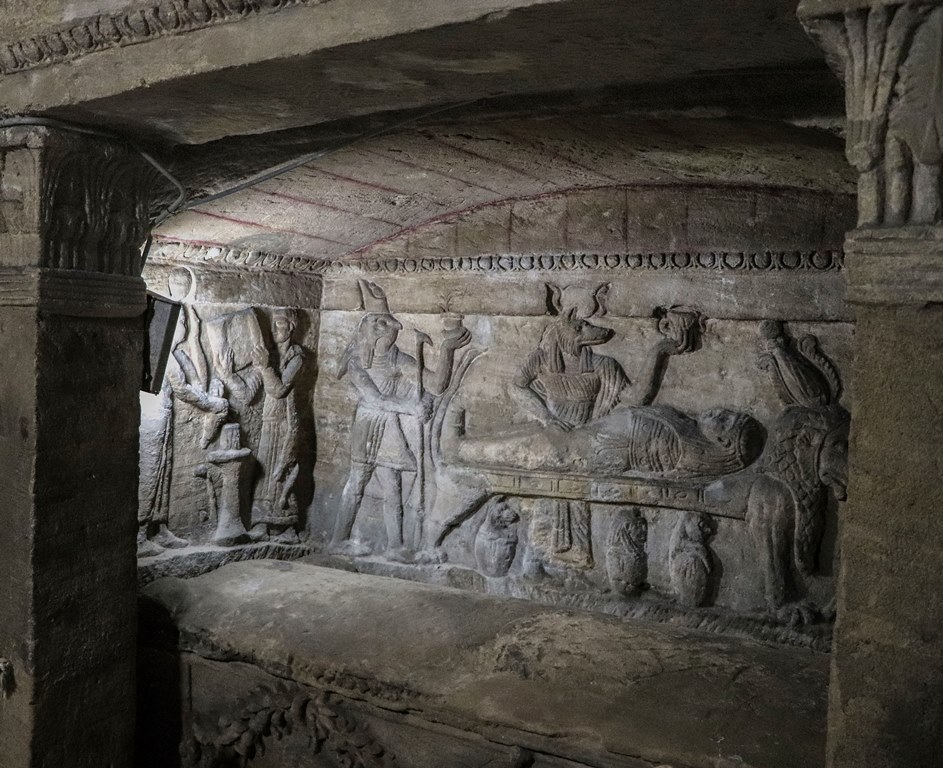
What are some of the key architectural features and discoveries made at the Catacombs of Kom el Shoqafa?
The Catacombs of Kom el Shoqafa are a marvel of architecture and art. The catacombs are spread over three levels, with the first level being the most elaborate. The level contains a rotunda, offering a circular space with stone benches for visitors to rest. The central shaft that opens into the rotunda also provides light to the lower levels.
The catacombs are filled with statues and reliefs that depict both Egyptian and Greco-Roman gods. One of the most notable features is the Hall of Caracalla, which contains the bones of horses and humans, believed to be the remains of the Emperor Caracalla’s massacre of Alexandria.
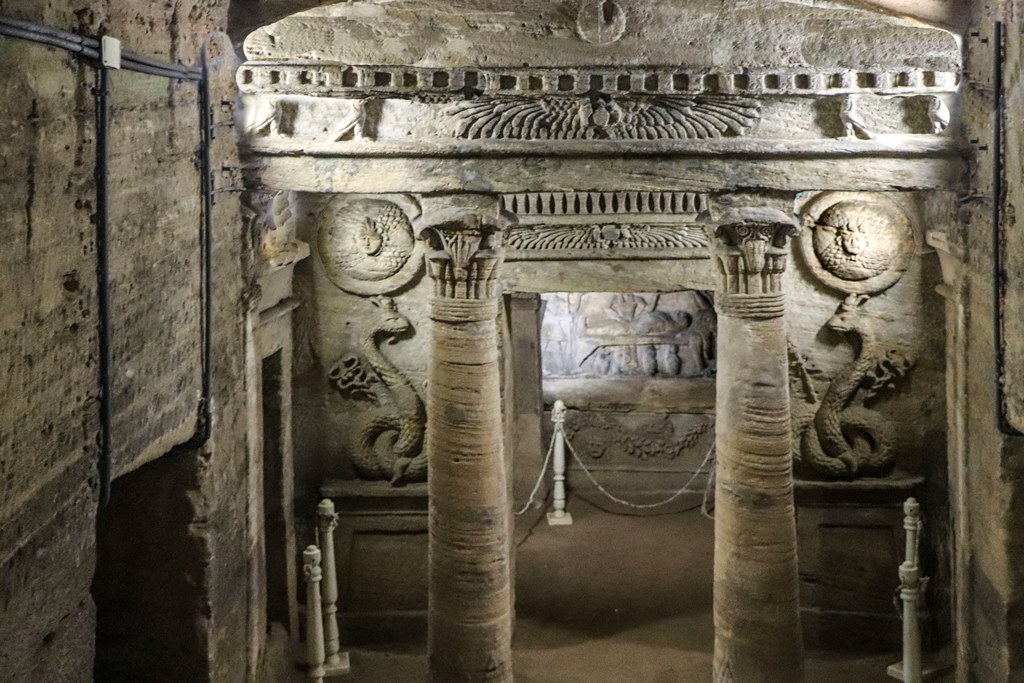
What are some of the key architectural features and discoveries made at the Catacombs of Kom el Shoqafa?
The second level of the catacombs, known as the Triclinium, is a banquet hall where families would hold a feast in honor of the dead. The hall is adorned with sculptures, including a statue of a woman believed to be Isis, the Egyptian goddess of life.
One of the most significant discoveries at the Catacombs of Kom el Shoqafa is the unique blend of art styles. The catacombs feature a mix of Egyptian, Greek, and Roman art, highlighting the cultural diversity of Alexandria during the Roman period.
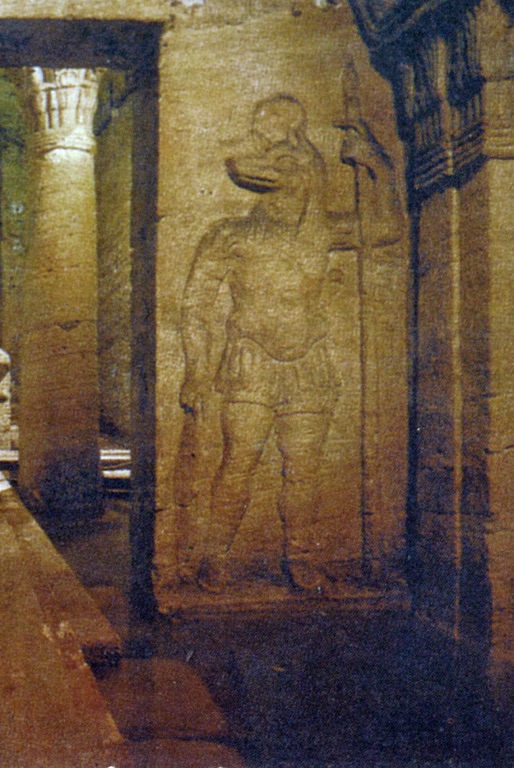
What are some of the key architectural features and discoveries made at the Catacombs of Kom el Shoqafa?
The third level of the catacombs is currently underwater, but it is believed to house more tombs. The first two levels provide a glimpse into the funerary practices of the ancient civilizations, with sarcophagi and loculi (niches where bodies were placed) scattered throughout.
One of the most fascinating aspects of the catacombs is the Decanalus, a corridor that leads to the Hall of Caracalla. The walls of the Decanalus are adorned with reliefs of a variety of mythological scenes, including the labors of Hercules.

Conclusion and Sources
In conclusion, the Catacombs of Kom el Shoqafa are a remarkable historical site that provides a unique insight into the funerary practices and beliefs of the ancient civilizations of Egypt, Greece, and Rome. The catacombs’ architecture and artwork showcase a unique blend of these cultures, making it a significant archaeological site.
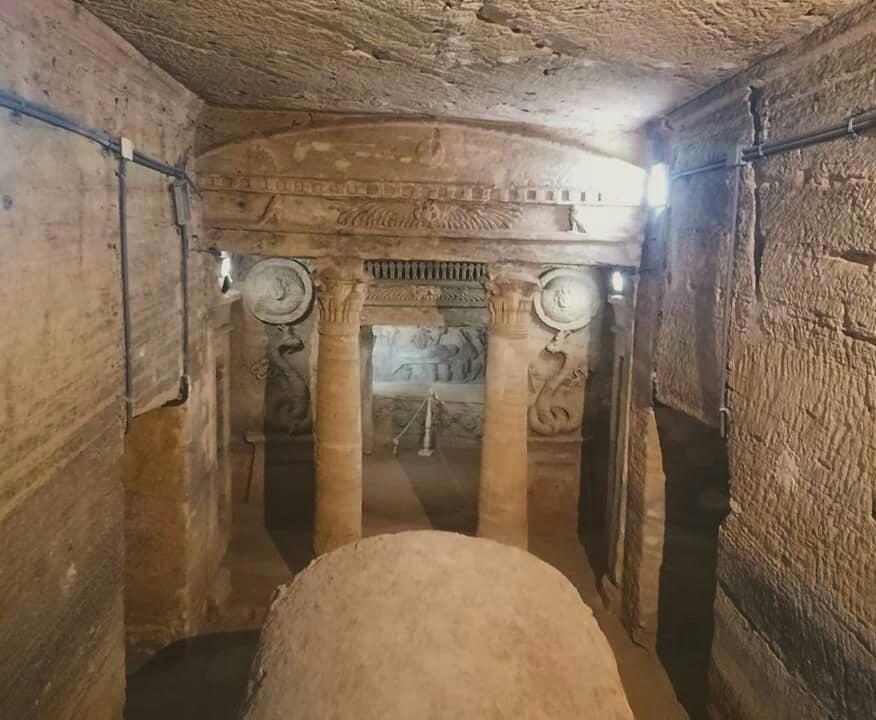
For further reading and to validate the information presented in this article, the following sources are recommended:

